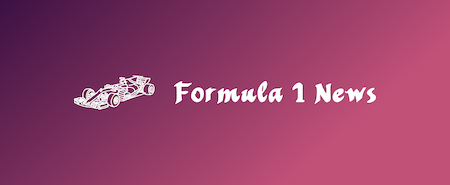
What do the 1978 Brabham BT46B Formula 1 mean run Car, the super trick GMA T.50 and the ridiculously fast McLaren F1 have in common?
Well, the trio were all written by auto design guru Gordon Murray and all three have fans – the first two have BIG fans and the McLaren, two smaller ones to make up for size. In contrast to most cars, however, these were not used so much to cool the engine, but to generate aerodynamic downforce using the “ground effect”.
Though Murray argued at the time that the Brabham’s fan was actually cooling the radiator to avoid banning the racer.
The Brabham’s fan was born out of a need to counter the groundbreaking ground effect of the 1977 Lotus 78, which relied on carefully shaping the underside of the car to accelerate the air flowing underneath and thereby increase the air pressure under the car in proportion reduce about it and force the tires on the track.
Murray quickly saw the potential in Peter Wright and Colin Chapman’s concept of the ground effect. The increase in downforce provided more grip and thus higher cornering speeds without significantly increasing air resistance – in contrast to conventional wings.
The problem Murray had in applying the concept to the Brabham was the layout of the Alfa Romeo flat-12, which made it impossible to implement the Lotus design. The Flat-12 engine was too wide to accommodate the venturi tunnels required for a really significant ground effect.
In his search for a solution to the interruption of the ground effect concept with the Alfa flat-12, Murray turned to the Chaparral Can-Am “vacuum car” for inspiration.
Gordon Murray’s first flirtation with a big fan was an instant hit
Via: Born of speed
While the 1970 Chaparral 2J had two fans in the rear that were powered by a special two-stroke engine, it suffered from reliability issues with the second engine before it was banned by sports authorities.
Concerned that the Brabham fan could also be banned, Murray sought legal advice on Article 3.7 of the Regulations for Aerodynamic Devices, which said: “Anything that is its primary function of aerodynamically influencing the car must always stand still and fixed relative to the vehicle is the sprung mass of the car “.
Murray concluded that the car would be considered legal as more than 52% of the fan airflow was used to cool the engine while the rest was used to create downforce.
Like the Lotus, the BT46B had sliding “skirts” that sealed the gap between the sides of the car and the floor, but unlike the 78, it had a massive exhaust fan powered by a complex series of clutches that extended from the engine Downforce increased from 800 pounds at 250 mph in 1976 to 2000 pounds at 250 mph in 1978.
The design was so successful that despite instructions from the two drivers to mask the speed of the BT46B in qualifying in its first race, the 1978 Swedish Grand Prix in Anderstorp, both Niki Lauda and John had to “calm down” Watson at the top qualified front row, Lauda wins the race.
This incredible victory in Sweden was the only race the BT46B had. However, contrary to popular belief, this was not due to a ban on the car, but rather a political decision not to make waves at a sensitive point in F1 history.
After proving the exhaust fan effectiveness in motorsport, Murray applied the same concept to two of his most successful street cars – the iconic McLaren F1 and the recently released GMA T.50.
The subtle and not-so-subtle fans who power Gordon Murray’s street cars
Via: Gordon Murray Automotive
Not widely known, the McLaren F1 had two 140mm fans that when activated increased downforce by five percent with a two percent reduction in drag. This was generated over an area of about 8 inches, according to Murray.
Due to a lack of wind tunnel availability, the design on the F1 was never tweaked, so Murray vowed that if he developed another supercar, he would want to use the car’s entire diffuser to generate downforce.
Almost thirty years later, Murray made his dream come true with the 277 mph V12 T.50 supercar – it shines with its LARGE 15.75-inch fan designed to improve the effectiveness of its diffuser.
With the T.50, the entire rear diffuser is active and is guided through a very steep duct without the air being blocked, as the fan accelerates the air flow through a filter. At the same time, ventilation openings also direct the air downwards in order to cool the drive oil.
Once again, Murray’s use of the fan to create downforce is so effective that the 1,878 pound T.50S “Niki Lauda” produces over 3,300 pounds of downforce. That’s 1,300 pounds more than the 2,000 pounds the Brabham produced – and the T.50 does it without a wing. The fan reduces air resistance by 30 percent compared to normal wings and passive ground effects.
In contrast to the T.50, which varies the fan speed based on numerous factors, the fan on the Lauda runs at maximum speed when the car exceeds 80 km / h. In simulations, GMA found that the car could actually generate nearly 4,200 pounds of downforce.
Although Gordon Murray has built a reputation for innovative car design for over 40 years, he’s best known for his huge fans in some of the most memorable cars in the business.
Continue reading
About the author
Peter Els
(72 articles published)
As an engineer with over 40 years of experience in the automotive industry, Peter Els can be summed up in one sentence: “Automotive engineer by profession, transmission of your choice.” Working from his home on the east coast of South Africa, Peter spends most of his time analyzing and writing cars and the exciting technologies that are driving the future of mobility. He shares his insights, opinions and experiences in several online publications, including a monthly column on the highly regarded Automotive IQ portal, articles on FutureCar, Robotics Business Review and product reviews in the Car Fix Book. When he’s not writing about cars, Peter is an avid motorsport fan. After driving motorcycle races for 10 years, he still enjoys track time – but now on four instead of two wheels.
More from Peter Els
The post That’s why car design guru Gordon Murray is a big fan of big fans first appeared on monter-une-startup.





